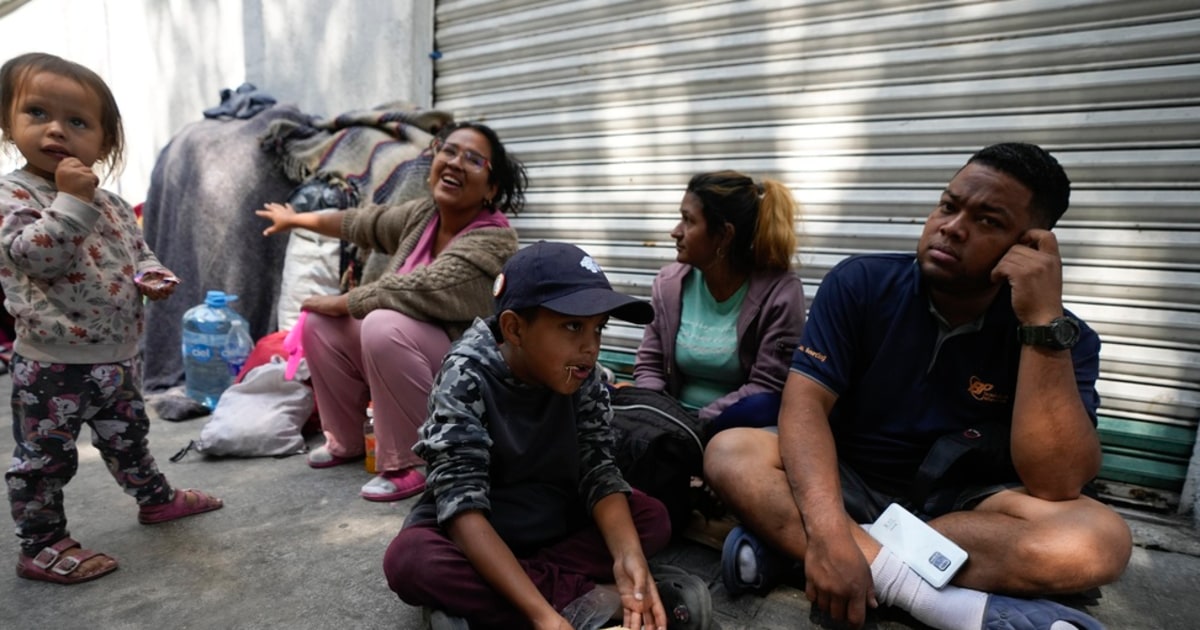By Suzanne Gamboa - NBC News
SAN ANTONIO.-
On June 19, or Juneteenth, Corina Torralba Harrington crosses into Mexico instead of staying in Texas, the state where the commemoration of that date originated, also called Emancipation Day.
He heads to his place of origin, Nacimiento de los Negros, in Coahuila, where his free Afro-descendant ancestors built a community long before the United States recognized the end of slavery.
Juneteenth
, now a national holiday, marks the day Union General Gordon Granger decreed that people who had been enslaved in that state would no longer be enslaved after the Civil War.
Corina Torralba Harrington. Jonathan Israel Castillo
Torralba Harrington says that the commemorations in Texas "are not the celebration of my people, because my people liberated themselves," he said.
Their ancestors were from the Black Seminoles, people who evaded slavery.
In Mexico that town is called the mascogos.
In the southern country they could be free
more than a decade before
Abraham Lincoln issued the Emancipation Proclamation in the United States, in 1863, and before General Granger forced its implementation in Texas, on June 19, 1865.
"Our celebration commemorates all the people who by that day had already regained their freedom," says Torralba Harrington.
A ride to commemorate Juneteenth in 2015, a date that among the Mascogo communities of Mexico is called El día de los negros.Dzilam Mendez
He comments that his town marks June 19 with The Dance of the Blacks and calls the date Black Day.
Like Torralba and his extended family, many Americans and Mexicans have ancestors who were enslaved and to escape that fate they fled to what is now Florida, where they joined and started families with the indigenous Seminoles.
From there many went to Oklahoma and later to Mexico.
But Torralba never learned any of this when he was studying in Texas.
“At school they never told us about Juneteenth, or anything about the history of Black Seminoles in Florida,” he says.
It was not until long after that she and her family reviewed their past and found the link with that history that spans centuries,
goes beyond changing borders, combines cultures and clearly shows the experiences of people who only wanted to survive in freedom.
Ashley Rodríguez, 28, who lives in Lubbock, Texas, is the daughter of Dina Rodríguez, who is Torralba's cousin.
Ashley Rodríguez comments that she never learned about black Seminoles in Mexico through textbooks, but that by learning about their ancestors in other ways she felt a greater connection to her current reality.
“Very often they ask me: 'What are you?'
Because people see me and wonder: 'Are you Jamaican, are you Dominican, are you Ethiopian, are you black, are you black-Asian, are you Filipino?' ”Says Rodríguez.
“Well, I answer them directly: I am black and I am Mexican, I am Afro-Mexican.
I am part of a story that almost no one knows
, because they don't even teach it in school ”, he adds.
[Immigration to the US and its effects on the disappearance of indigenous languages]
Rodríguez stresses that this is why the movement for black social justice, which has grown especially since George Floyd was murdered a year ago by someone who was a police officer, is one that should include her and other descendants of Black Seminoles.
Corina Torralba and her family Jonathan Israel Castillo
Dig up a hidden story
Torralba used to only travel to Mexico for large family gatherings.
That changed in 2015.
“We knew we had family around from our past who were black.
But we didn't know anything about history, about the Seminoles, ”she says about herself and her parents, who grew up in Nacimiento.
["That's not right": new generations confront their immigrant parents about racism]
In 2015, Torralba and his brother traveled to Bracketville, Texas, where other descendants of black Seminoles live who celebrate Juneteenth and every September they come together for remembrance events called "Seminole Days."
Torralba and his brother originally only went to visit their maternal grandmother's grave at the Seminole Indian Scouts Cemetery.
But there they learned a lot about their family history.
For example, that Torralba's maternal grandfather was called Matías Cervantes in Mexico, but that in that cemetery on the American side he is buried with his Anglo name, Robert Fay.
They also learned a little about the Mascogo background.
The story goes that in the 1700s
, black Seminoles fled the slave plantations of Georgia and North Carolina to head for Florida.
At that time Florida was still a Spanish colony in which slavery had been abolished.
While there, many black Seminoles joined with indigenous tribes and Native American populations to fight against the newly formed United States between 1816 and 1850, in what were later called the Seminole Wars.
Post-Revolution America won, and then forced Black Seminoles to move to now-Oklahoma.
'Juneteenth': This black tribe that escaped the US and sought refuge in Mexico celebrates the end of slavery
June 18, 202101: 48
It was on this journey that black Seminoles and other Native Americans, faced with the threat of being returned to a slave zone, undertook a journey to
Mexico, where slavery had been abolished by law since 1829
.
They were directed by John Horse, sometimes also called Juan Caballo.
[They are the 'Las diablitas de Hondzonot', a group of Mayan women who play softball]
Several black Seminoles and Native Americans settled in Nacimiento de los Negros and built a life there.
On several occasions they had to defend the area, including against Rangers who tried to invade from Texas.
After the American Civil War ended, some black Seminoles returned to Bracketville, Texas, recruited to be sentinels for the American Army that was fighting Native tribes.
Black Seminoles were posted for that task at Fort Clark, until the Army expelled them from there after those wars.
Some went back to Mexico and others stayed in Bracketville.
Historic photos including a black and white photo of Corina Torralba's great-grandmother, Effie Payne, whose Mexican name was Felipa Valdes, with her son Ned Griner, whose name was Manuel Torralba, in Brackettville, Texas.Jonathan Israel Castillo
Preserve and share
Today, Torralba and Rodríguez have as a personal mission to preserve the history of their culture and teach others about it.
Dina Rodríguez, Torralba's cousin, even discovered a decade ago that her great-great-great-grandfather was Pompey Factor, one of only four of the black Seminole sentinels that the US Armed Forces recognized with
the Medal of Honor.
"It was very surprising," said Rodriguez, 50, of Lubbock.
His mother and father are from Nacimiento de los Negros and although his father knew that Factor was from his ancestors he did not know the exact relationship.
Rodríguez says she was also recently moved by seeing a YouTube video that features another cousin, Bertha Benson.
In the video Benson talks about the
Afro-amino language and says it is at risk of disappearing.
“I was moved to realize that, because my grandfather spoke it, just like my uncle, and I don't want him to get lost.
It is part of my history, of my family ”, he says.
At Nacimiento de los Negros, Torralba, Rodríguez and others are now fixing up a room to use as a classroom where they can teach the history and songs they learned from their grandparents and relatives to children in Mexico.
[How many tribes still live in isolation in Latin America?]
The songs are also being translated into Spanish so that the children and others understand what they are singing.
Torralba comments that this way they can transmit not only the suffering and losses that exist in the history of their people but also the strength and joy.
“Growing up I have come to realize that Juneteenth is really about that, with different perspectives; I see it as a
celebration that my ancestors made sure to be free from slavery,
”says Rodríguez. "Although almost no one knows to date about the
Mexican aspect
of the commemoration."







